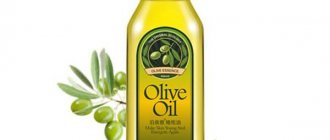In alternative medicine, St. John's wort is actively used for acne and acne. This universal healing plant has a unique composition and has a disinfecting and soothing effect on the skin. Plus, to some extent, St. John's wort is able to stop inflammatory processes, which is why it has found its use in the fight against dermatological problems. Various decoctions, infusions, and masks are made from natural remedies, but it is recommended to use them for acne only after consultation with a specialized physician - a dermatologist.
Beneficial features
Among the people, many people know St. John's wort as hare's blood, bloodworm, St. John's wort, krovtsa, red herb. The plant has been very popular since ancient times and it is not surprising that it began to be used to solve dermatological problems, such as acne, pimples. By regularly using St. John's wort, you will be able to achieve the following positive results:
- wounds and burns heal without leaving scars;
- blackheads and inflamed pimples will disappear;
- the skin will become much cleaner, acquire elasticity, an even complexion, and freshness;
- irritation and age spots will disappear;
- enlarged pores will narrow;
- existing scars, stretch marks, and scars will lighten.
The effectiveness of St. John's wort for the skin has been scientifically proven; moreover, the medicinal herb has been actively used in pharmaceutical cosmetology for the production of cleansing and anti-inflammatory products.
There is probably no such disease that they would not try to treat with St. John's wort. People say: “Just as you can’t bake bread without flour, you can’t cure a person without St. John’s wort.” This plant has many names - St. John's wort, St. John's wort, St. John's wort, St. John's wort, St. John's wort, St. John's wort, St. John's wort, St. John's wort, field pharmacy.
The generic name “Nurericum” is derived from two Greek words: “huro” - under and “ereike” - heather; it turns out “growing under heather”, or “resembling heather”. The name “perforatum” - perforated or perforated - the plant received because of the small transparent containers scattered throughout the leaf blade.
The most famous name of the herb “St. John’s wort” comes, according to some assumptions, from the Kazakh “dzherabai”, meaning “healer of wounds”, according to others - due to the ability of St. John’s wort to cause disease in sheep. Moreover, not all animals fed with St. John's wort get sick, but only white or variegated ones, and only on a bright sunny day. Swellings form on the head of such animals, growing into ulcers, and severe itching appears. But, as soon as a sick sheep moves into the shade, after a while all painful phenomena disappear. It turns out that St. John's wort contains substances (hypericin and other condensed anthracene-derivative glycosides) that increase skin sensitivity to ultraviolet rays.
In the old days, St. John's wort was considered a magical plant. In rural areas, when stuffing children's mattresses, they always added St. John's wort to the straw so that the smell of this plant would protect the child from fright in his sleep. St. John's wort was a favorite remedy of Paracelsus, used against spirits hostile to man. He wrote: “The veins on its leaves are signatures. If they are pierced, this means that the plant drives away all the ghosts around the person. ... Nurericum (St. John's wort) is an almost universal medicine.” There is also a mention of St. John's wort in Ayurveda: “Its nature is hot and dry in the second degree. St. John's wort has a cleansing, drying and resolving effect.” St. John's wort was considered a medicinal plant in both Ancient Greece and Rome. Hippocrates, Dioscorides and Pliny the Elder wrote about him. Avicenna recommended “drinking it for forty days in a row to cure inflammation of the sciatic nerve; and take the seed internally to stop the fever.” In Kievan Rus, St. John's wort was considered a herb for 99 diseases. By order of Tsar Michael, St. John's wort was collected in Siberia, dried, ground into flour and sent to Moscow “by the pound for every year.”
St. John's wort is a perennial herbaceous plant of the St. John's wort family, 30–100 cm high. The stems are smooth, round, with two lateral ribs, branched at the top. The rhizome of St. John's wort is thin, highly branched. Leaves with numerous translucent light and black glands. On examination they appear to be punctured. St. John's wort blooms from June to August. The flowers are collected in an inflorescence. The petals are bright yellow. The fruit of St. John's wort is a three-lobed capsule. The seeds are small, oblong, brown. St. John's wort is distributed throughout almost the entire European part of Russia, the Caucasus, Western and Eastern Siberia, as well as in the mountains of Central Asia. It grows in dry meadows, hills, clearings and forest edges, in sparse forests and among bushes. It is found as a weed near roads and along the edges of fields.
The name “St. John's wort” is explained by the small black dots that cover the flowers and leaves. We are not talking about holes, but about small glands filled with a red dye - hypericin. When collected independently, this is a sure sign of identification of St. John's wort: if you rub a flower or bud between your thumb and forefinger, they will turn dark red. Hypericin is especially necessary for the treatment of depression, stress, and nervous breakdowns; it does not have any side effects on the central nervous system.
St. John's wort herb is harvested in the flowering phase of the plant (before the appearance of unripe fruits), cutting off the leafy tops without the rough bases of the stems.
The main active ingredients of the herb St. John's wort are condensed anthracene derivatives - hypericin and pseudohypericin. Their number is about 0.5%. Hypericin and pseudohypericin are accompanied by resinous substances, the content of which reaches up to 17%. St. John's wort herb contains flavonoid glycosides of the flavonol group: rutin, quercitrin, hyperoside, myricetin, leukoanthocyanidins and anthocyanins (5–6%). The hyperoside content in the grass reaches 1.0–1.2%. Along with anthracene and flavonol derivatives, St. John's wort contains tannins (up to 10%), essential oil (0.2–0.3%), saponins, ascorbic acid, carotene (up to 55 mg/100 g).
St. John's wort preparations have astringent, anti-inflammatory, antiseptic and tissue regeneration stimulating properties. Medicinal preparations from St. John's wort have a beneficial effect on the functional state of the central and autonomic nervous system. Bioflavonoids contained in St. John's wort bind to benzodiazepine receptors and have a sedative effect. The drugs improve mood, increase mental and physical performance, and normalize sleep. The antidepressant effect is due to the ability to inhibit the reuptake of serotonin, norepinephrine and dopamine; St. John's wort preparations do not have contraindications and side effects, which become constant companions of chemical antidepressants.
Infusions, tinctures and extracts are obtained from the herb St. John's wort. The drugs Novoimanin, Negrustin, St. John's wort, Gelarium Hypericum, Deprim, Deprim forte are registered on the market. St. John's wort herb is included in the herbal mixtures “Brusniver” and “Brusniver-T”, “Arfazetin”, “Mirfazetin”, etc.
St. John's wort infusion (10 g per 200 ml) is used as an astringent, disinfectant and anti-inflammatory agent orally for diseases of the gastrointestinal tract, acute and chronic colitis of non-bacterial origin. Take 100 ml orally 3 times a day before meals for 1–2 months.
St. John's wort tincture and the drug Novoimanin have an antimicrobial and anti-inflammatory effect. Inhibits the growth of predominantly gram-positive microorganisms, such as Streptococcus pyogenes and Streptococcus agalactiae, penicillin-resistant Staphylococcus aureus and methicillin-resistant Staphylococcus aureus. Indicated for abscesses, phlegmon, infected wounds, burns (I–III degree), trophic ulcers, pyoderma, mastitis, rhinitis, pharyngitis, sinusitis.
St. John's wort tincture in 40% alcohol (1:5) is used as an astringent and anti-inflammatory agent in dentistry (40–50 drops 3–4 times a day) and for rinsing (30–40 drops in half a glass of water).
Novoimanin is used externally, in the form of a solution for wet dressings, rinsing cavities, electrophoresis, inhalations and drops (external auditory and nasal canal); Before use, the alcohol solution is diluted 1: 5–10–25–100 with sterile distilled water, a sterile 10% dextrose solution or a 0.25% procaine solution. Solutions obtained by diluting a 1% alcohol solution are suitable for use during the day. During the treatment period, care must be taken when driving vehicles and engaging in potentially hazardous activities that require increased concentration and speed of psychomotor reactions.
Medicines based on St. John's wort concentrate are indicated for the treatment of mild and moderate depression. They have antidepressant, anxiolytic and sedative effects. Negrustin is taken 1 capsule 1-2 times a day or 1 ml of oral solution 3 times a day (undiluted or with a small amount of water with meals) for 6-8 weeks. St. John's wort is prescribed 1-2 tablets 3 times a day for at least 3 weeks, it is possible to increase the duration of treatment to 3 months (no more). Gelarium Hypericum is used 1 tablet 3 times a day for at least 4 weeks, Deprim - 1 tablet 3 times a day for 4-6 weeks, Deprim Forte - 1 capsule 1-2 times a day for 4-6 weeks
For all its popularity, St. John's wort is far from harmless. It should not be used for a long time in case of arterial hypertension and severe depression. It is contraindicated in childhood (under 12 years), during pregnancy and lactation. Even in healthy people, drinking large amounts of strongly brewed St. John's wort tea can cause symptoms of acute gastritis (nausea, pain in the epigastric region, dry oral mucosa, diarrhea or constipation), and in those suffering from hyperacid gastritis or gastric ulcer, severe overdose may occur. spasms and pain in the intestines. Amino acids, trictophan and tyrosine, amphetamines, monoamine oxidase inhibitors, antidepressants should not be used simultaneously with St. John's wort (the interval between doses should be at least 14 days). When used together with fluoxetine, paroxetine, sertraline, fluvoxamine or citalopram, St. John's wort aggravates hemolytic reactions and the course of “serotonin syndrome” (increased sweating, tremor, dizziness, nausea, vomiting, headache, epigastric pain, restlessness, anxiety, state of confusion, confusion , anxiety and irritability).
On the part of the hematopoietic organs, an overdose can cause iron deficiency anemia. St. John's wort increases the skin's sensitivity to ultraviolet rays, so after drinking tea or herbal infusion, you must refrain from sunbathing and avoid being in the sun. If this rule is violated, St. John's wort can cause sunburn of the skin, eczema, skin pigmentation and even severe dermatitis. They are especially difficult for blondes and people with delicate skin that does not take well to tanning. In case of chronic intoxication, UV radiation should be avoided for 1–2 weeks.
St. John's wort preparations can enhance the photosensitizing effect of other drugs: tetracyclines, sulfonamides, thiazide diuretics, quinolones, piroxicam, etc. They prolong sleep caused by drugs for general anesthesia and narcotic analgesics, but shorten sleep caused by barbiturates. St. John's wort reduces the hypotensive effect of reserpine and reduces the concentration of cyclosporine in the blood. St. John's wort reduces the concentration of indinavir in the blood, increases the rate of metabolism of theophylline, reducing the concentration of digoxin in the blood, and reduces its effectiveness. When used simultaneously with ethinyl estradiol and desogestrel, the risk of breakthrough bleeding increases.
During treatment with St. John's wort, it is necessary to refrain from drinking ethanol-containing drinks and avoid UV radiation (including solarium, UV lamps, prolonged exposure to sunlight) for 1–2 weeks.
Beer, coffee, wine, chocolate, smoked or pickled foods, and yoghurt do not go well with St. John's wort.
St. John's wort is widely used in homeopathy. The whole flowering plant is used to prepare the homeopathic remedy Hypericum. It is given to alleviate the condition after a concussion, depression of various natures and nerve pain after injuries.
In folk medicine, as in official medicine, St. John's wort is used primarily for the treatment of wounds and pain, in the treatment of diseases of the lungs, stomach, intestines and gall bladder, for diarrhea and nervous disorders. They use tea, oil, and alcohol extract (tincture) in equal measure, which is used to disinfect wounds.
The popular name “Ivan's grass” is associated with the fact that St. John's wort begins to bloom on Midsummer's Day, and the name “Ivan's Blood” is associated with the legend of the death of John the Baptist. When Herod killed John the Baptist, several drops of blood fell to the ground and grass grew in that place, absorbing John’s blood. This herb is St. John's wort. The leaves and petals of St. John's wort actually contain a bright red pigment that looks like blood.
Information about the authors: Samylina Irina Aleksandrovna – Doctor of Pharmaceutical Sciences, Professor, Corresponding Member of the Russian Academy of Medical Sciences, Director of the Research Institute of Pharmacy; Head of the Department of Pharmacognosy, First Moscow State Medical University named after. THEM. Sechenov. Tel.; Sorokina Alla Anatolyevna – Doctor of Pharmaceutical Sciences, Professor of the Department of Pharmacognosy of the First Moscow State Medical University named after. THEM. Sechenov. Tel.; Pyatigorskaya Natalya Valerievna – Candidate of Pharmaceutical Sciences, Associate Professor, Deputy Director of the Research Institute of Pharmacy for Scientific Work of the First Moscow State Medical University named after. THEM. Sechenov. Tel.
Methods of application
Decoction, infusion
A popular recipe for preparing the plant is tincture.
Traditional healers suggest using St. John's wort for acne in the form of a decoction. The recipe is quite simple and is as follows:
- Measure out 1 spoon of dried, crushed plant.
- Pour the dry raw material into a glass of boiling water.
- Leave for 15 minutes, then filter using a piece of gauze folded in several layers.
- Wipe problem areas of the dermis or make a lotion from the broth.
For acne and pimples, an infusion made from fresh St. John's wort will be especially effective. To prepare it also does not require much effort and time, you need to pour 200 ml of boiling water 1 tbsp. l. chopped plant (fresh) and, tightly closing the lid of the vessel, leave for 60 minutes. After time, strain the folk medicine and use it in the same way as a decoction.
Face mask
To get rid of pimples, and at the same time saturate the skin tissue with natural elements, remove acne and pigmentation with the help of a healing mask based on St. John's wort and auxiliary ingredients. You can make it according to the following recipe:
Chamomile flowers make the mask more healing and beneficial.
- Take 5 g of St. John's wort, chamomile inflorescences and oat bran. The ingredients must be crushed.
- Pour strong green tea over the dry ingredients and mix well.
- Distribute the mixture over the entire face, avoiding the area around the eyes.
- After 15 minutes, when the mask dries, wash it off.
Healing oil
If it is not possible to purchase ready-made St. John's wort oil at a pharmacy, you can prepare it yourself at home. You will have to tinker a little, but the excellent result at the end of the treatment is worth it. You need to measure out 100 g of dried plant flowers and 0.5 liters of vegetable oil. Boil in a water bath for about half an hour, then cover with a lid and place in a dark place for 4 hours. After the time has passed, filter the medicine and place it in a glass container. Store tightly covered in the refrigerator for no longer than 5 months.
- You can prepare healing oil that will help solve the problem of acne, and according to another recipe:
- Find young branches of St. John's wort and grind them into powder.
- Take 30 g of the resulting raw material and pour 300 ml of olive oil into a glass jar.
- Do not close the vessel and leave it warm for 4 days, remembering to stir every day.
- After the specified time, close the lid tightly and place in the sun.
- After 30-45 days, a liquid with a bright red color should appear on the surface. It is poured into another jar and stored on the bottom shelf of the refrigerator.
Alcohol tincture
You can easily buy the product at the pharmacy in your city.
A tincture of red grass will perfectly cope with acne and get rid of pustules, blackheads, as well as any other inflammatory lesions on the face. But it is not recommended for those with skin that is too dry and prone to flaking. It is important that the tincture does not get into your eyes, otherwise you will need to immediately rinse them under cold running water. For those who do not want to buy a ready-made tincture at the pharmacy, you can prepare it yourself:
- Mix 1 part dried flowers with 10 parts vodka.
- Leave in a cool, dark place for 14 days.
- Filter and wipe problem areas several times a day.
Before performing any cosmetic procedure, it is important to cleanse your facial skin of makeup and impurities.
The use of St. John's wort as a treatment and for a general strengthening effect
In what cases is St. John's wort used:
- For gastritis and stomach ulcers;
- For healing wounds (open, festering);
- For gynecological diseases;
- For depression (brewed as tea);
- Treatment of the cardiovascular system;
- As a pain reliever;
- If necessary, remove bile from the body.
The plant can be especially useful for such ailments as:
- Heat;
- Decreased immunity;
- A decrease in the general tone of the body in spring and autumn, when vitamin deficiency occurs;
- Muscle spasms;
- Sleep disturbance.
There are many types of St. John's wort, and only a few are capable of producing a healing effect. One of these species is St. John's wort. This name is due to the fact that small gaps can be seen on the leaves. The reserves of the medicinal herb are small, and it is a protected plant, so its seeds must be harvested for further propagation.
In what form is it used:
- in dried form, brewed as a medicinal tea;
- in the form of an enzyme included in drugs;
- in the form of essential oil.
Possible consequences of using St. John's wort:
- It should be used with caution by those who like to sunbathe, as the herb increases the skin's sensitivity to ultraviolet radiation.
- It is best not to self-medicate, but to consult a doctor, because St. John's wort may reduce the effectiveness of other medications taken in parallel.
- You should not get carried away with using medications based on St. John's wort, because... if taken for a long time, it can cause poisoning of the body, and instead of a therapeutic effect, you will get discomfort.
- If a woman is taking contraceptive pills, it is better to stop taking St. John's wort, as it may reduce the effectiveness of contraception.
- Men should also not get carried away with this herb. With prolonged use, potency decreases, which, fortunately, is restored after cessation of treatment.
Who will it harm?
St. John's wort, despite all its usefulness, can negatively affect human health. Therefore, in order to avoid the negative impact of the plant on the body, it is necessary to avoid it for people with high blood pressure and vascular diseases. The medicinal herb is contraindicated for nursing mothers and pregnant women, as well as for patients who have undergone organ transplant surgery. It is better to avoid St. John's wort for patients undergoing treatment with antibacterial drugs, since the plant can reduce their therapeutic effect.










